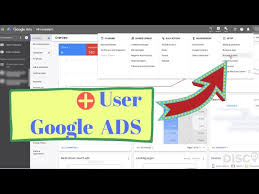Braces removal marks an exciting milestone in your orthodontic journey, signaling the end of treatment and the beginning of a beautiful, straight smile. However, before you can fully enjoy your newly aligned teeth, it’s essential to understand the cost implications associated with getting braces removed. In this comprehensive guide, we’ll explore the factors influencing the cost of braces removal and provide insights into what to expect throughout the process.
Understanding Braces Removal Cost:
The cost of getting braces removed can vary significantly depending on various factors, including the complexity of your orthodontic treatment, your location, the orthodontist’s experience, and any additional procedures required after braces removal. Generally, the total cost includes the orthodontist’s fee for removing the braces, as well as any additional fees for retention devices, dental exams, and follow-up appointments.

1. Orthodontist’s Fee: The orthodontist’s fee for removing braces typically accounts for a significant portion of the total cost. This fee reflects the orthodontist’s expertise and the time and effort required to safely and effectively remove the braces without causing damage to your teeth or gums. The complexity of your orthodontic treatment and the type of braces you had (traditional metal braces, ceramic braces, lingual braces, etc.) can also influence the orthodontist’s fee.
2. Additional Procedures: In some cases, additional procedures may be required after braces removal to ensure that your teeth remain in their new positions and your smile remains stable. These procedures may include dental impressions for retainers, adjustments to retainers or other orthodontic appliances, or minor dental work to address any issues that may have arisen during treatment. The cost of these additional procedures will vary depending on your specific needs and the orthodontist’s recommendations.
3. Location: The cost of braces removal can also vary depending on your geographic location. Orthodontic fees tend to be higher in urban areas and areas with a higher cost of living. Additionally, orthodontists in certain regions may have higher overhead costs, which can impact the overall cost of treatment. It’s essential to research orthodontists in your area and compare their fees to ensure you’re getting the best value for your investment.
4. Insurance Coverage: If you have dental insurance that covers orthodontic treatment, it may also cover the cost of getting braces removed. However, coverage can vary significantly depending on your insurance plan and provider. Some plans may cover a portion of the orthodontist’s fee, while others may cover the entire cost of braces removal. Be sure to check with your insurance provider to understand your coverage and any out-of-pocket expenses you may incur.
5. Retention Devices: After braces removal, you’ll likely need to wear a retainer to maintain the alignment of your teeth and prevent them from shifting back to their original positions. The cost of retainers can vary depending on the type of retainer prescribed by your orthodontist (removable or fixed) and any customization required to fit your teeth properly. Be sure to factor in the cost of retainers when budgeting for braces removal.
Conclusion:
Getting braces removed is an exciting milestone in your orthodontic journey, but it’s essential to understand the cost implications and factors influencing the overall cost of treatment. By considering the orthodontist’s fee, additional procedures, location, insurance coverage, and the cost of retention devices, you can make informed decisions about your orthodontic care and ensure that you achieve the straight, beautiful smile you’ve always wanted. Remember to consult with your orthodontist to discuss any concerns or questions you may have about the cost of braces removal and develop a treatment plan that aligns with your budget and goals.


